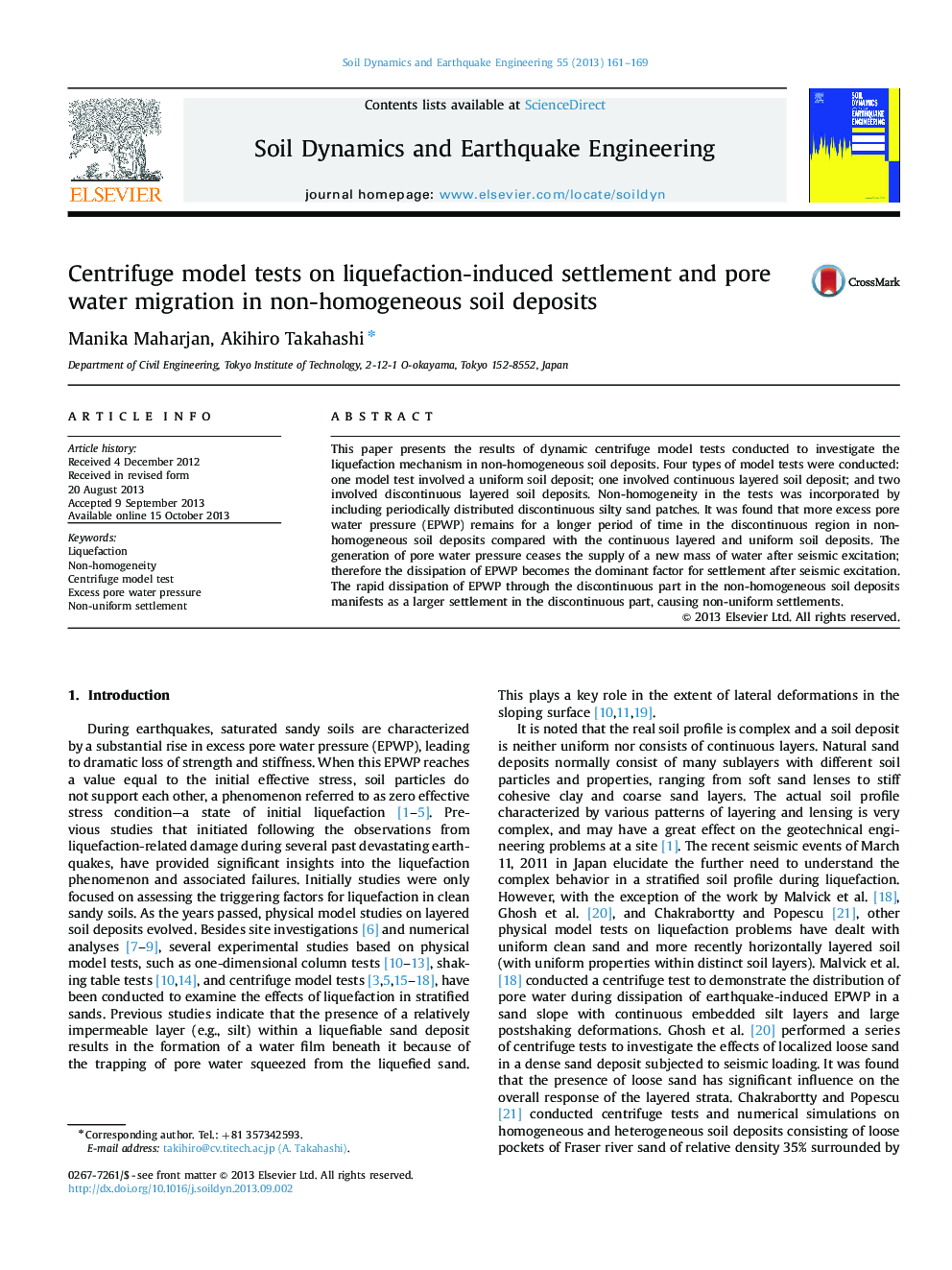| Article ID | Journal | Published Year | Pages | File Type |
|---|---|---|---|---|
| 304172 | Soil Dynamics and Earthquake Engineering | 2013 | 9 Pages |
•Model tests were conducted to investigate the liquefaction in non-homogeneous soil deposits.•Non-homogeneity is incorporated by including periodically distributed silt patches.•Pore water pressure remains high for a longer period of time at discontinuous region.•Dissipation of pore pressure through discontinuity manifests larger settlement.
This paper presents the results of dynamic centrifuge model tests conducted to investigate the liquefaction mechanism in non-homogeneous soil deposits. Four types of model tests were conducted: one model test involved a uniform soil deposit; one involved continuous layered soil deposit; and two involved discontinuous layered soil deposits. Non-homogeneity in the tests was incorporated by including periodically distributed discontinuous silty sand patches. It was found that more excess pore water pressure (EPWP) remains for a longer period of time in the discontinuous region in non-homogeneous soil deposits compared with the continuous layered and uniform soil deposits. The generation of pore water pressure ceases the supply of a new mass of water after seismic excitation; therefore the dissipation of EPWP becomes the dominant factor for settlement after seismic excitation. The rapid dissipation of EPWP through the discontinuous part in the non-homogeneous soil deposits manifests as a larger settlement in the discontinuous part, causing non-uniform settlements.
